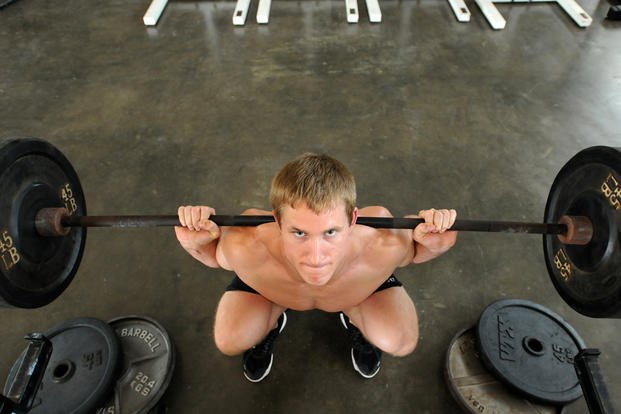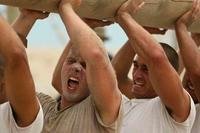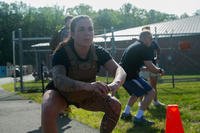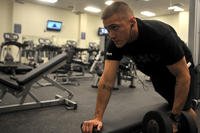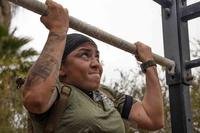Every year as young athletes start lifting programs in high schools, there is one common issue with teenage boys and girls: knee caving during weighted and non-weighted squats and lunges. You sometimes see knee caving occur when jumping, during a deadlift and even while running.
Knee caving is actually tolerated by world-class power lifters, but for athletes who play sports that involve running, kicking, speed and agility, it is recommended to focus on keeping the knees out during lifting workouts.
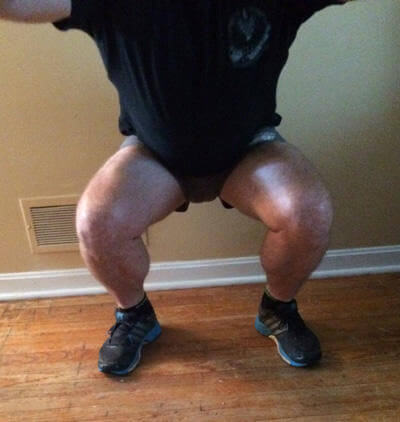 |
| Knees Out Squat |
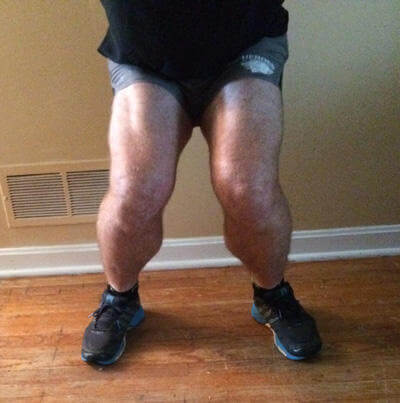 |
| Knee Caving Squat |
It is important to correct the knee-caving issue by learning proper technique and doing a few easy warmup stretches and lightweight lower-body exercises, as seen below. This combination also will help the athlete who runs for their sport to have a stronger injury-prevention foundation. A variety of things can cause knee caving, from joint inflexibility (ankle and hip) to muscle imbalances (glutes, hams, thighs). But by correcting the weakness and technique, you will less likely see injuries, such as pain in the iliotibial band (ITB), patellofemoral syndrome (PFS) and maybe even ACL tears, in some cases.
Full disclosure: Saying something prevents injury is difficult to prove, but preventing knee caving definitely will help an athlete's running, power creation, and joint stability and mobility.
Here are a few stretches and exercises that are easy to do:
Ankle joint flex: Just as you would lean forward to stretch your calves, place your feet flat on the floor and flex your ankles so your knee is capable of tracking in line with and over your toes.
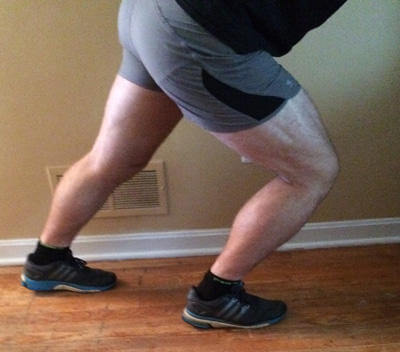 |
Hip flexibility and mobility: Work on externally rotating the hips while in a deep squat and lunge. Hold the stretch. (Non-weighted.)
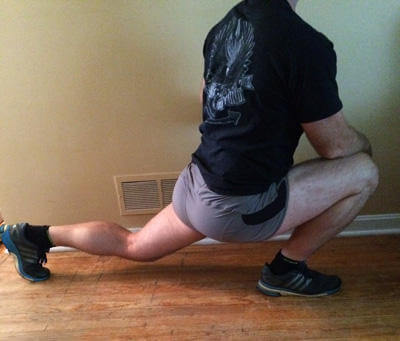 |
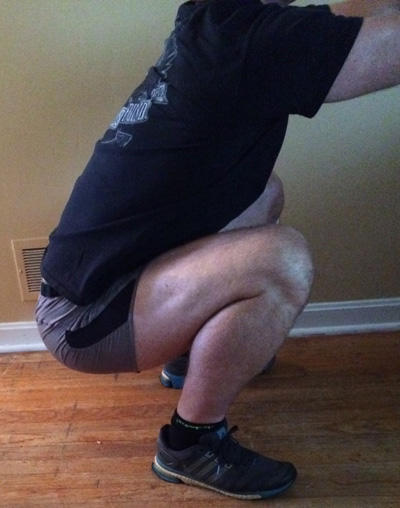 |
The two positions above are stretches, not an exercise done for multiple repetitions (for now).
Lunge stretch: Step forward and drop your hips as low as you can. Focus on keeping the knee in line with the toes. If you notice a slight inward lean of the knee, use the arm or hand to pull slightly so the knee is tracking with the toes. This also stretches the hips and ankles. Keep your front foot flat on the floor.
Squat stretch: Some call these third-world squats or catcher squats, but the goal is to drop the hips as far as you can while keeping your back straight and feet flat on the floor in a slightly flared-out position (11 and 1 o'clock). If you cannot hold this position, it is OK to hold onto a sturdy piece of equipment or bar and work the hips from side to side while in the down position. Always focus on keeping the knee tracking with the toes to help break the habit of knee caving.
Thera-Band exercise: Monster Walk: Place the strap around your feet, ankles or knees, depending on your ability. The higher the band, the easier the exercise is. Open and close your legs to work the glutes and hips. Move from side to side and shuffle in a forward and backward direction while keeping tension on the bands around your legs. This helps strengthen the muscles that will allow for your knees to stay outward instead of caving inward.
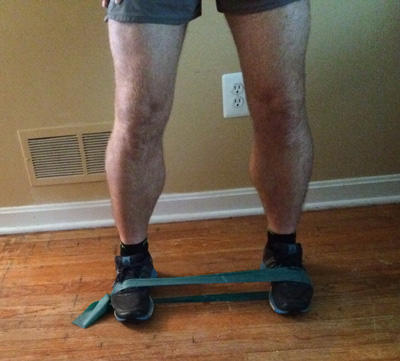 |
Soccer split-squat exercise: This can be done with a dumbbell in each hand or without weight. I recommend practicing without weight at first as you likely will see knee caving without weight when teaching a beginner lifting athlete. If there's no caving, add weight progressively. Take a big forward step onto a box or bench, then drop your hips forward as far as you can and let your knee extend over your toes. As you step backward, keep your knee tracking in line with your foot and toes.
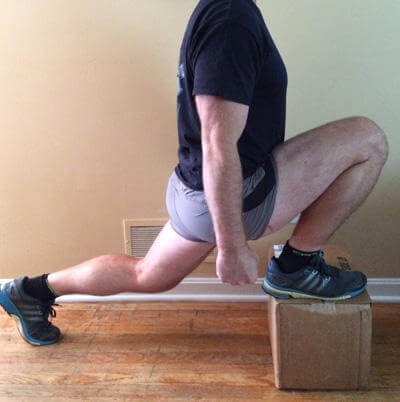 |
These are just a few exercises out of literally hundreds you can do to strengthen the hips, glutes and thighs and increase mobility in the hips, knees and ankles. A simple focus on preventing knee caving will help you in so many other areas in your athletics and help you in the weight room when building up your strength and power lifts.
Some other exercises that can assist include adding a foam roller to roll out your calves, hips, thighs and more. We have been doing exercises like dirty dogs, side leg lifts and donkey kicks for years to help with the gluteus medius and minimus to help with running overuse injuries such as ITB/PFS. Make sure these are part of your daily warmup and cooldown.
Some science-based references:
Stew Smith is a former Navy SEAL and fitness author certified as a Strength and Conditioning Specialist (CSCS) with the National Strength and Conditioning Association. Visit his Fitness eBook store if you’re looking to start a workout program to create a healthy lifestyle. Send your fitness questions to stew@stewsmith.com.
Want to Learn More About Military Life?
Whether you're thinking of joining the military, looking for fitness and basic training tips, or keeping up with military life and benefits, Military.com has you covered. Subscribe to Military.com to have military news, updates and resources delivered directly to your inbox.
